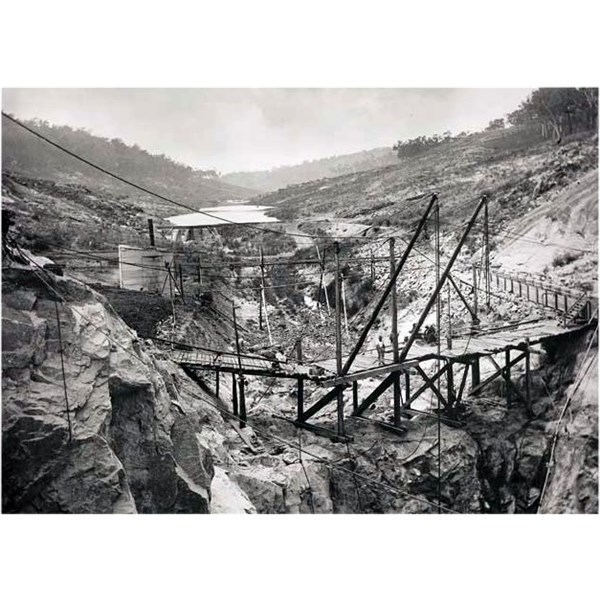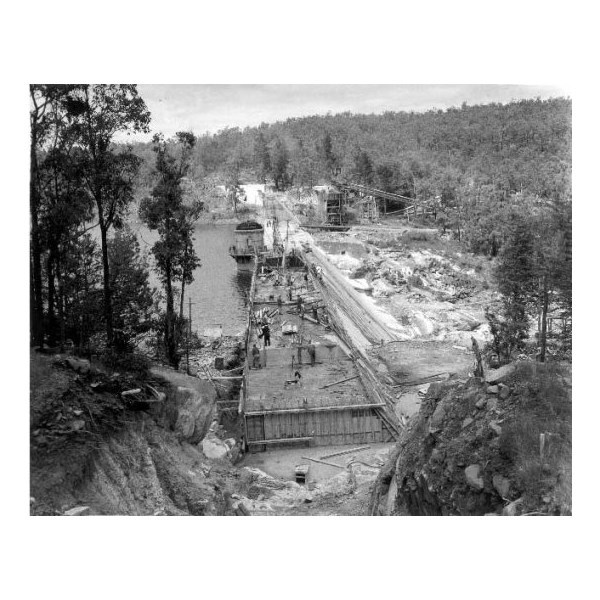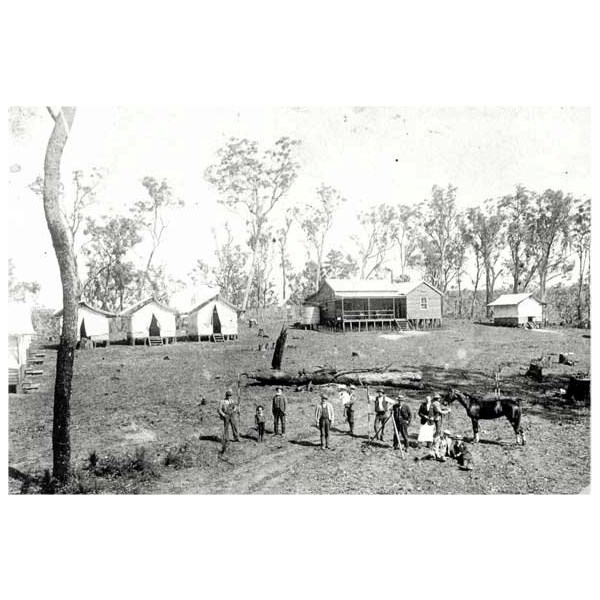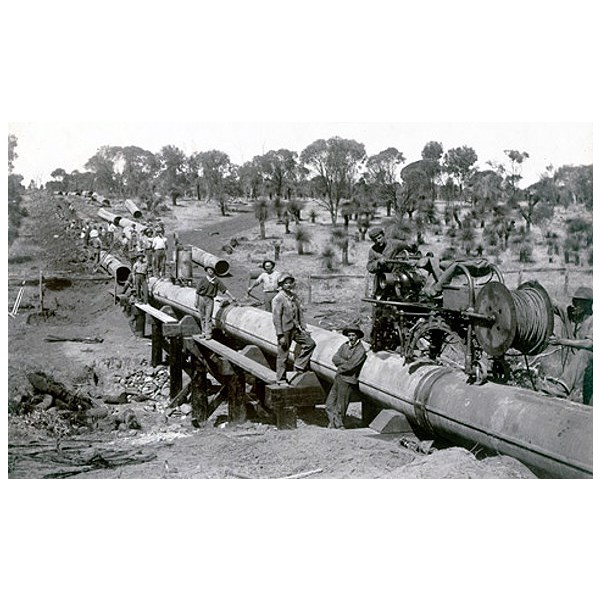During the early 1890s, thousands of settlers had swarmed into the barren and dry desert centre of Western Australia in search of gold, but existing
infrastructure for the supply of water was non-existent and an urgent need arose.
The Goldfields
Water Supply Scheme is a pipeline and
dam project to deliver water to communities in Western Australia's Eastern Goldfields, particularly
Coolgardie and Kalgoorlie. The project was commissioned in 1896 and was completed in 1903.

Mundaring Weir Construction

Mundaring Weir nearing completion in about 1901

Original pumping station at Mundaring Weir.
was constructed to
dam the Helena River and provide the water for the
Coolgardie Water Supply Scheme.Construction commenced in 1898 and was completed three years later. For one year of that period construction work was conducted around the clock under electric light. The 32 m high Weir contained 77,508 casks of cement which had been imported from Germany and England.
The scheme enabled the benefits of the gold discovery to be realised and brought immense wealth into the previously struggling economy. Abundant water became available at a cost of three shillings and sixpence per thousand gallons, compared to water which had previously been carted by rail to
Coolgardie at the rate of over £3 per thousand gallons. The position was even worse at Kalgoorlie.
The scheme was devised by C. Y. O'Connor who oversaw its design and most of the construction project. Although supported by Premier
Forrest, O'Connor had to deal with widespread criticism and derision from members of the Western Australian Parliament as
well as the local press based on a belief that scope of the engineering task was too great and that it would never work. There was also a concern that the gold discoveries would soon dry up and the state would be left with a significant debt to repay but little or no commerce to support it.

C. Y. O'Connor 1890s
O'Connor committed suicide in March 1902 less than 12 months before the final commissioning of the pipeline. Lady
Forrest officially started the pumping machinery at Pumping Station number one on the 22 January, and on 24 January 1903 water flowed into the Mount Charlotte Reservoir at Kalgoorlie. O'Connors' engineer-in-chief, C. S. R. Palmer took over the project after his death, seeing it through to its successful completion.
The pipes were manufactured locally from flat steel sheets imported from Germany and the
United States. Mephan Ferguson was awarded the first manufacturing contract and built a fabrication plant at Falkirk (now known as the
Perth suburb of Maylands) to produce half of the 60,000 pipes required. Hoskins Engineering established a factory near Midland
Junction to produce the other half.

Workers' Camp

Laying and joining pipes
When built, the pipeline was the longest fresh-water pipeline in the world.
The pipeline ran alongside the route of the earlier route of the Eastern Railway and the Eastern Goldfields Railway's for parts of its route, so that the railway service and the pipeline had an interdependence through the sparsely populated wilderness.
The scheme required significant
infrastructure in power generation to support the pumping stations. Communities oriented to its management grew up along the route. However, with improved power supplies and modern machinery and automation, the scheme now has more unattended pumping stations operated by fewer personnel.
.